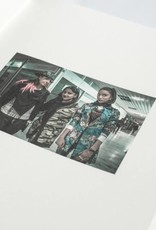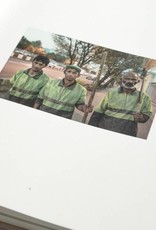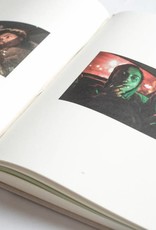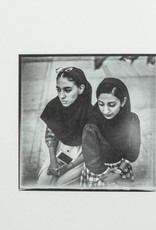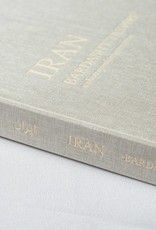Un livre photographique poétique, perspicace et visuellement fascinant sur la République islamique d’Iran, présenté en trois chapitres.
De la cosmopolis tentaculaire de Téhéran, en passant par les expressions et les expériences quotidiennes de la religion et de la foi islamiques, et en traversant la myriade de paysages et de gens — les Iraniens eux-mêmes étant le principal protagoniste du livre.
IRAN Bardasht Tasviri – une perception photographique, est un livre bilingue, avec des essais écrits par Sam Asaert ainsi que des anecdotes textuelles par de nombreux Iraniens, présentés à la fois en anglais et en farsi.
Le livre contient quelque 220 photographies (format numérique, 35mm et 120mm) prises au cours d’une période de trois ans (2014-2017).
A poetic, insightful and visually riveting photography book on the Islamic Republic of Iran, presented in three chapters.
From the sprawling cosmopolis of Tehran, through the everyday expressions and experiences of the Islamic religion and faith, and traversing the myriad of landscapes and people—the Iranians themselves being the main protagonist of the book.
IRAN Bardasht Tasviri – a photographic perception, is a bilingual book, with essays written by Sam Asaert as well as textual anecdotes by numerous Iranians, presented both in English and Farsi.
The book contains some 220 photographs (digital, 35mm and 120mm format) taken over the three-year period (2014-2017).
‘This book is not about Iran.
This book is a photographic perception of Iran.
A book about Iran would imply the conveyance of ideas and notions about it. Yet within these pages, you will find nothing of the historic, linguistic, political, cultural, or any of the broader context necessary to obtain substantial and deeper insight into a place as rich, as diverse, and as old as Iran.
There are many different perceptions of Iran and, depending upon the reader of this book, the photographic representations of people and places in the following three chapters can be interpreted as adhering to any one of these.
For some of you these photographs will confirm your perception of Iran as a pious and spiritual society living righteously by the word of Allah, following the Shi’a religious principles. Or perhaps it will confirm your perception that Iran is a land of heretics. While for others these photographs might confirm the perception that Iran is a singular, homogeneous society living under the suffocating yoke of an authoritarian Islamic theocracy. Others will see their perception confirmed of a society in dire need of so-called “Westernisation”, and others still might even find proof of the so-called terrorist state.
Yet unless you have spent time in Iran yourself you have only ever been exposed to others’ perceptions of it. These generally offer little understanding of what Iran is, as a culture in its own right, because they tend to narrow it down into single defining elements through a distinct visual language of symbols. Bearded men become symbolic for Islam, veiled women for oppression, disenfranchised youth for civil regression, etc…
And though often based on truisms—you will find bearded men, veiled women and disenfranchised youth within the pages of this book also—these images that are symbolic of certain perceptions are also abstractions and stereotypical oversimplifications of a larger and more nuanced reality nonetheless.
Underneath and in between these prevailing perceptions of what Iran is inevitably still beats the heart of a complex multi-layered contemporary society—with roots going back millennia—that is both modern and traditional, spiritual and intellectual, artistic and rigid, striving and melancholic, progressive and oppressive, and neither Eastern nor Western.
So rather than stripping Iranians of their individuality and reducing them to symbols that suit certain perceptions of Iran, the photographs and texts in this book aspire at imploring you to regard Iranians no




